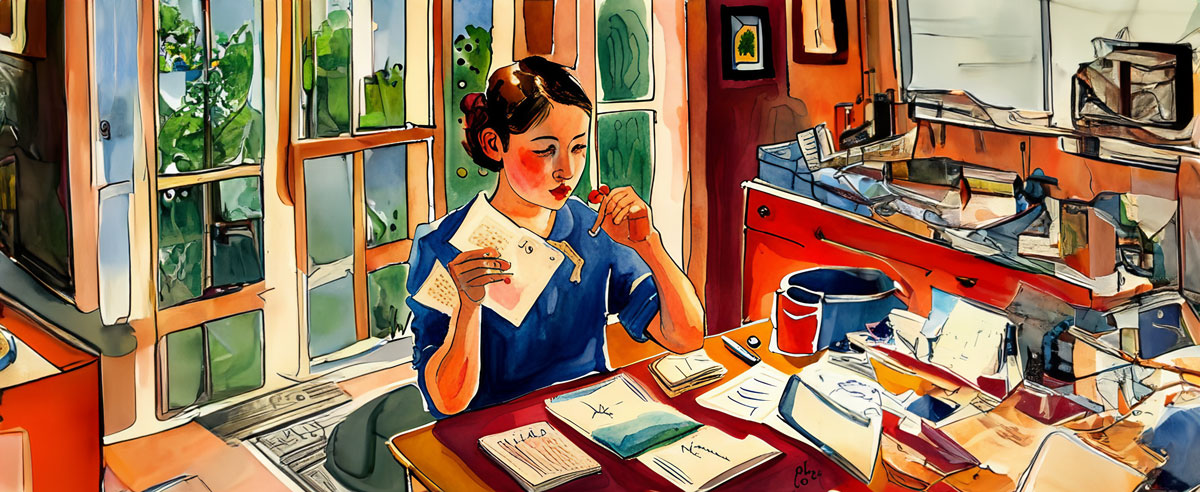Your cart is currently empty!

Mail Art-Inspired Family Postcard Exchanges: A Creative Tradition Spanning Generations
In today’s fast-paced digital world, handwritten letters and postcards have become a rare and cherished form of communication. Taking inspiration from the Mail Art movement, which originated in the 1960s and involved artists exchanging handmade, visually-striking postcards with one another, families can start a unique tradition of exchanging postcards that not only fosters connection but also preserves memories and artistic expression across generations. In this article, we will explore the benefits of engaging in a Mail Art-inspired family postcard exchange and provide tips for starting your own creative tradition.
The Benefits of a Family Postcard Exchange
A Mail Art-inspired family postcard exchange offers several advantages:
- Strengthening family bonds: Exchanging postcards encourages regular communication among family members, fostering connection and a sense of belonging.
- Preserving memories: Handwritten postcards capture personal thoughts, experiences, and emotions, creating a tangible record of your family’s history.
- Encouraging creativity: Designing and creating unique postcards allows family members to express their artistic talents and individuality.
- Bridging generations: A postcard exchange can span generations, connecting grandparents, parents, and children through shared creativity and storytelling.
Starting Your Own Mail Art-Inspired Family Postcard Exchange
1. Involve the whole family
Gather your family members and discuss the idea of starting a postcard exchange. Encourage everyone to participate, regardless of age or artistic ability. The goal is to foster connection and creativity, not to create perfect works of art.
2. Set guidelines and expectations
Establish some basic guidelines for your family’s postcard exchange, such as the frequency of sending postcards (e.g., monthly, quarterly, or on special occasions) and any themes or prompts to inspire creativity. Ensure that everyone understands the expectations and is committed to participating.
3. Create your postcards
Encourage family members to design and create their postcards using a variety of materials and techniques, such as collage, painting, drawing, or even digital design. The Mail Art movement was known for its unconventional and experimental approach, so don’t be afraid to think outside the box and push the boundaries of traditional postcard formats.
4. Write personal messages
In addition to the visual aspect of the postcards, encourage family members to include heartfelt messages that share their thoughts, experiences, and emotions. These written words will help to create a deeper connection among family members and provide valuable insights into each person’s life at the time the postcard was created.
5. Exchange and preserve your postcards
As your family members exchange their postcards, consider creating a designated space or album to display and preserve the collection. This will allow everyone to admire the creativity and artistry of their relatives while also providing a tangible record of your family’s history.
6. Reflect on the experience
As your family’s postcard exchange progresses, take the time to reflect on the experience and discuss the impact it has had on your relationships and understanding of one another. Share your favorite postcards, stories, or memories from the exchange, and celebrate the connections and creativity it has inspired.
By embracing the spirit of the Mail Art movement and engaging in a family postcard exchange, you can create a meaningful tradition that fosters connection, creativity, and storytelling across generations. As your collection of postcards grows over the years, it will serve as a visual and written testament to your family’s history, filled with cherished memories and artistic expressions that can be admired and treasured for years to come.
by
Tags:
Family Scrolls is dedicated to creating living, rich media histories. My name is Briyan Baker and I’ve always loved exploring my family history. My career in the graphic arts industry has allowed me to explore all kinds of creative uses for multimedia materials: audio, video, text, photos, graphics, etc., and bring them to life while telling vivid, engaging stories.
- Blog (1)
- Books, Journals, Historical Writing (7)
- Crafting and Keepsakes (5)
- Family Events (2)
- Genealogy (3)
- Oral History (2)
- Photo, Audio, Video (4)
- Print and Display Ideas (4)
- Vlogging (3)
- World Wide Web Family (4)
